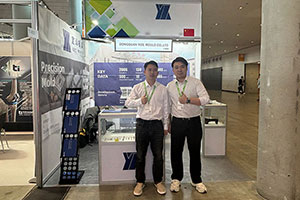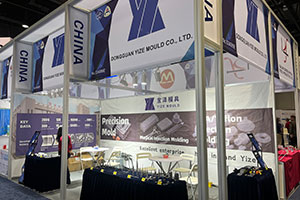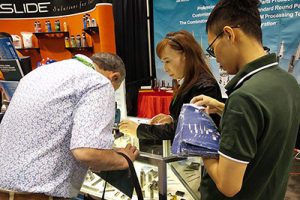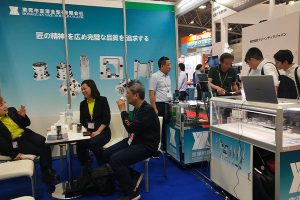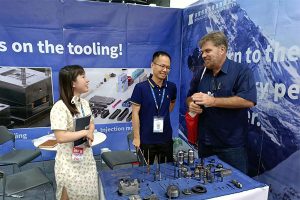Enhancing the Production Efficiency of Tungsten Carbide Dies
In the fiercely competitive modern industrial market, efficiency is the lifeblood of enterprises, serving as a crucial support for them to stand firm amidst market waves. Tungsten carbide dies, as […]
In the fiercely competitive modern industrial market, efficiency is the lifeblood of enterprises, serving as a crucial support for them to stand firm amidst market waves. Tungsten carbide dies, as indispensable tools in modern industrial production, have a production efficiency that directly affects the economic benefits and market competitiveness of enterprises. However, in actual production, the production efficiency of tungsten carbide dies is often hindered by various factors. Therefore, enhancing the production efficiency of tungsten carbide dies through process optimization has become a highly popular topic in the industry. This article will explore how to improve the production efficiency of tungsten carbide dies from the perspective of process optimization and analyze its practical application effects in detail.
The Necessity of Process Optimization
In the production process of tungsten carbide dies, traditional production processes are like a lumbering old man, plagued by numerous issues. The long production cycle is akin to a never-ending marathon, slowing down the capital turnover of enterprises. High energy consumption acts like a bottomless pit, continuously devouring corporate profits. And a high defect rate further increases costs, significantly reducing the market competitiveness of enterprises. These problems are intertwined, forming an invisible net that tightly binds enterprises. Therefore, optimizing the production process of tungsten carbide dies to improve production efficiency and reduce production costs has become an urgent need for enterprises to break through dilemmas and achieve sustainable development.
Our factory business: carbide parts, mold parts, medical injection molds, precision injection molds, teflon PFA injection molding, PFA tube fittings. email: [email protected],whatsapp:+8613302615729.
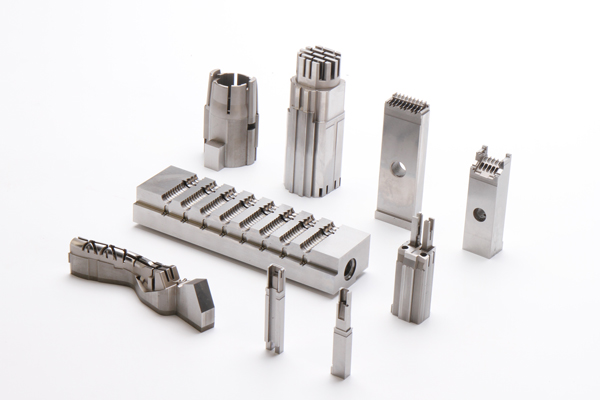
Main Directions of Process Optimization
Material Selection and Proportion Optimization: Laying a Solid Foundation for Performance
The material selection and proportion of tungsten carbide dies are the cornerstones that determine their performance and production efficiency. By carefully optimizing material selection and proportion, the hardness, wear resistance, and toughness of tungsten carbide dies can be significantly improved, thereby laying a solid foundation for enhancing production efficiency. In material selection, it is essential to select high-quality tungsten carbide raw materials with the same care as choosing precious gems. Meanwhile, according to product characteristics and process requirements, precisely adjust the proportions of components such as tungsten carbide and metal binders to achieve the best material performance.
Manufacturing Process Optimization: Carving Quality Details
Optimizing the manufacturing process is a crucial breakthrough for improving the production efficiency of tungsten carbide dies. Advanced powder metallurgy technology, pressing molding technology, and sintering technology are like magical wands that can enhance the density and uniformity of the dies, making their internal structures more compact and homogeneous. Optimizing heat treatment processes such as quenching and tempering is akin to having a highly skilled craftsman who can precisely adjust the hardness and toughness of the dies, significantly improving their wear resistance and service life.
Processing Accuracy Improvement: Pursuing Ultimate Perfection
Processing accuracy is one of the key factors affecting the production efficiency of tungsten carbide dies. Improving processing accuracy is like putting on a sturdy armor for the dies, reducing the defect rate and rework rate, and thus enhancing production efficiency. During the processing, it is necessary to use high-precision processing equipment and tools, just as equipping soldiers with sophisticated weapons. At the same time, strictly control processing parameters such as cutting speed and feed rate to ensure that the dimensional accuracy and surface quality of the dies reach the highest level.
Automation and Intelligent Transformation: Leading the Future Trend
With the rapid development of technology, automation and intelligent technologies are shining like bright stars in industrial production. By introducing automated and intelligent equipment, the automated and intelligent control of the production process of tungsten carbide dies can be achieved, making the production process more efficient and precise. For example, using CNC machine tools and robots for processing and assembly is like giving production an “intelligent brain,” which can significantly improve production efficiency and product quality.
Energy Conservation and Emission Reduction Measures: Practicing Green Development
Energy conservation and emission reduction are important missions in today’s society and also a significant direction for improving the production efficiency of tungsten carbide dies. By optimizing production processes and equipment to reduce energy consumption and emissions, enterprises can achieve a win-win situation. Measures such as adopting energy-saving sintering furnaces and optimizing heat treatment processes are like opening a door to green development for enterprises, reducing energy consumption and exhaust emissions, and lowering production costs and environmental pollution.
Practical Application Effects of Process Optimization
Through process optimization, the production efficiency of tungsten carbide dies has achieved a qualitative leap. Here are some vivid examples of practical application effects:
After optimizing material selection and proportion, the hardness and wear resistance of tungsten carbide dies have been significantly enhanced, and their service life has been extended as if by magic. At the same time, the improvement in material performance has also led to a significant increase in the processing accuracy of the dies, greatly reducing the defect rate and rework rate.
After optimizing the manufacturing process, the density and uniformity of tungsten carbide dies have been improved, making their performance more stable and reliable. The optimized heat treatment process has achieved a perfect match between the hardness and toughness of the dies, further enhancing their wear resistance and service life.
After improving processing accuracy, the dimensional accuracy and surface quality of tungsten carbide dies have reached new heights. The reduction in the defect rate and rework rate has significantly increased production efficiency. Meanwhile, high-precision dies have also contributed to improving product quality and pass rates.
After automation and intelligent transformation, the production process of tungsten carbide dies has achieved automated and intelligent control. The impact of manual operations on production efficiency has been greatly reduced, and both production efficiency and product quality have been improved. In addition, the application of automated and intelligent equipment has also reduced production costs and labor costs for enterprises.
After implementing energy conservation and emission reduction measures, the energy consumption and emissions during the production process of tungsten carbide dies have been significantly reduced. This has effectively controlled production costs and environmental pollution for enterprises, enhancing their sense of social responsibility and sustainable development capabilities.
Conclusion
Process optimization is undoubtedly a golden key to improving the production efficiency of tungsten carbide dies. Optimization and improvement in aspects such as material selection and proportion, manufacturing process, processing accuracy, automation and intelligent transformation, and energy conservation and emission reduction can bring significant benefits to enterprises, including reduced production costs, improved product quality, and enhanced production efficiency. At the same time, these optimization measures can also improve the market competitiveness and social responsibility of enterprises. Therefore, in the future development path, enterprises should unswervingly strengthen process optimization and technological innovation work, continuously explore new paths for improving the production efficiency of tungsten carbide dies, and inject a continuous stream of power into enterprise development.


